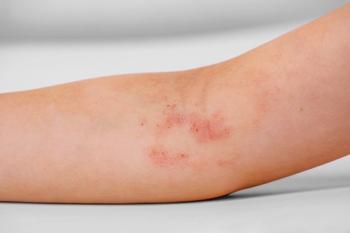
- Consultant for Pediatricians Vol 9 No 2
- Volume 9
- Issue 2
Type 1 Diabetes Mellitus in Children and Adolescents: Part 1, Overview and Diagnosis
Type 1 diabetes mellitus (T1DM) is the most common type of diabetes encountered in children. The incidence of T1DM in children is increasing in some populations. Early recognition of symptoms of T1DM is critical to avoid life-threatening metabolic decompensation. Such symptoms can include polyuria, polydipsia, fatigue, weight loss, urinary tract infection, vaginal candidiasis, and “fruity” breath. In the presence of clinical symptoms of hyperglycemia, diagnosis requires just 1 laboratory blood glucose measurement above the established threshold for the child’s age. In the absence of typical symptoms, a second abnormal blood glucose measurement on a different day is needed.
Case: A 15-month-old boy is brought to his family practitioner’s office for evaluation of severe candidiasis in his diaper region that has been present for the past 2 weeks. His mother has used over-the-counter barrier creams, but the condition has not resolved. In addition to her concern about the rash, the mother also notes that he has been irritable with his voids, and she thinks he may have dysuria. Questioning reveals a 1-week history of increased wet diapers at night that soak the bed, increased thirst, weight loss, and decreased energy. The child is otherwise healthy; he has no history of medical problems and currently takes no medications. What investigations should be included in the workup?
Type 1 diabetes mellitus (T1DM) is the most common endocrine problem seen in children and adolescents. T1DM is the result of immune-mediated destruction of pancreatic cells; it involves the formation of autoantibodies against insulin and various enzymes and results in an inability to produce insulin.1 Type 2 diabetes mellitus (T2DM), in contrast, is associated with insulin resistance and obesity.2 T1DM is more common in children than T2DM, although the incidence of T2DM in children is currently increasing in association with the increase in childhood obesity.3 Family physicians and general pediatricians are often responsible for making the initial diagnosis of T1DM in children and then for treating the disease in these patients. In this article, we review the epidemiology and diagnosis of pediatric T1DM. In Part 2 of this article (on page 69 of this issue), we will focus on the management of T1DM in children and adolescents.
EPIDEMIOLOGY
The incidence of T1DM in children varies widely. It is higher in Caucasian populations and in populations at a distance from the equator.4 For the years 1990 to 1994, the countries that had the highest incidence rates of T1DM in children 14 years or younger were Finland, with 36.5 per 100,000 per year; Sweden, with 27.5 per 100,000 per year; Canada (Prince Edward Island), with 24.5 per 100,000 per year; and Norway (8 counties), with 21.2 per 100,000 per year.4 China and South America had the lowest incidence rates: less than 1 per 100,000 per year.4 In the United States, the incidence rate has been reported as between 11.7 and 17.8 per 100,000 per year.4
There is evidence that in younger populations the incidence of T1DM may be increasing. In a study of children younger than 15 years, the overall incidence of T1DM from 1990 to 1999 was found to have increased by 3.6% per year in peninsular Italy and by 3.7% per year in Sardegna.5 In the Avalon Peninsula of Newfoundland, Canada, the incidence of T1DM was found to have increased at a rate of 1.25 per 100,000 per year from 1987 to 2002.6
Interestingly, in a Swedish study of persons from a wider age-range (0 to 34 years), covering the period from 1983 to 1998, there was no overall increase in T1DM incidence but rather a shift to a younger age at diagnosis.7 The incidence of T1DM increased over time in children younger than 14 years but decreased in persons in older age-groups.7 This may suggest that the disease develops earlier in persons at risk than it did in the past. It is unclear at the present time what specific factors are responsible for the increase in incidence of T1DM in younger patients. Genetic factors or environmental factors-such as pollution, viruses, toxins, or lifestyle habits-may be responsible.1,8,9
DIAGNOSIS
Early diagnosis of T1DM is critical to prevent more progressive metabolic decompensation, such as the development of diabetic ketoacidosis (DKA), which is associated with increased morbidity and mortality.10 The clinical presentation of T1DM in children and adolescents varies depending on the duration of hyperglycemia before diagnosis and treatment. Symptoms and signs can range from mild asymptomatic hyperglycemia alone to hyperglycemia with ketosis-and in severe cases, to DKA.11 A medical history or family history of other autoimmune diseases (eg, Hashimoto thyroiditis, Graves disease, celiac disease) may also be present. Initial clinical features and laboratory findings are listed in Table 1.
The diagnostic criteria for diabetes, impaired fasting glucose, and impaired glucose tolerance are described in Table 2. In the office setting, a urine dipstick test and a glucose meter reading can be useful screening tests to rule out hyperglycemia, glucosuria, and ketosis; however, a laboratory serum glucose level should always be obtained to confirm the diagnosis. If a patient has clinical symptoms of hyperglycemia or acute metabolic decompensation, only 1 diagnostic laboratory blood glucose test is required; keep in mind that prompt initiation of treatment is called for in this setting. In the absence of typical symptoms (see Table 1), repeat the diagnostic laboratory blood glucose test on another day.12-14
In the case presented at the beginning of this article, it would be appropriate to begin the workup with a random serum glucose measurement and urinalysis to evaluate for ketones and to rule out a urinary tract infection.
References:
REFERENCES:
1. Eisenbarth GS, Jeffrey J. The natural history of type 1A diabetes. Arq Bras Endocrinol Metabol. 2008; 52:146-155.
2. Rosenbloom AL, Silverstein JH, Amemiya S, et al; International Society for Pediatric and Adolescent Diabetes. ISPAD Clinical Practice Consensus Guidelines 2006-2007. Type 2 diabetes mellitus in the child and adolescent. Pediatr Diabetes. 2008;9: 512-526.
3. Ho J, Pacaud D, Leung AK. Type 2 diabetes mellitus in children: a new challenge for diagnosis and prevention. Consultant For Pediatricians. 2006; 5:77-80.
4. Karvonen M, Viik-Kajander M, Moltchanova E, et al. Incidence of childhood type 1 diabetes worldwide. Diabetes Mondiale (DiaMond) Project Group. Diabetes Care. 2000;23:1516-1526.
5. Carle F, Gesuita R, Bruno G, et al; RIDI Study Group. Diabetes incidence in 0- to 14-year age-group in Italy: a 10-year prospective study. Diabetes Care. 2004;27:2790-2796.
6. Newhook LA, Curtis J, Hagerty D, et al. High incidence of childhood type 1 diabetes in the Avalon Peninsula, Newfoundland, Canada. Diabetes Care. 2004;27:885-888.
7. Pundziute-Lyckå A, Dahlquist G, Nyström L, et al; Swedish Childhood Diabetes Study Group. The incidence of Type I diabetes has not increased but shifted to a younger age at diagnosis in the 0-34 years group in Sweden 1983-1998. Diabetologia. 2002;45:783-791.
8. Hawa MI, Leslie RD. Early induction of type 1 diabetes. Clin Exp Immunol. 2001;126:181-183.
9. Eisenbarth GS. Update in type 1 diabetes. J Clin Endocrinol Metab. 2007;92:2403-2407.
10. Wolfsdorf J, Craig ME, Daneman D, et al; International Society for Pediatric and Adolescent Diabetes. Diabetic ketoacidosis. Pediatr Diabetes. 2007;8:28-43.
11. Couper J, Donaghue K; International Society for Pediatric and Adolescent Diabetes. Phases of diabetes. Pediatr Diabetes. 2007;8:44-47.
12. Canadian Diabetes Association Clinical Practice Guidelines Expert Committee. Canadian Diabetes Association 2008 clinical practice guidelines for the prevention and management of diabetes in Canada. Can J Diabetes. 2008;32(suppl 1):S1-S201.
13. Craig ME, Hattersley A, Donaghue K; International Society for Pediatric and Adolescent Diabetes. ISPAD Clinical Practice Consensus Guidelines 2006-2007. Definition, epidemiology and classification. Pediatr Diabetes. 2006;7:343-351.
14. American Diabetes Association. Standards of medical care in diabetes-2007. Diabetes Care. 2007;30(suppl 1):S4-S41.
Articles in this issue
almost 14 years ago
History of Cough in an Infant and a Toddlerover 15 years ago
Oculo-Auriculo-Vertebral Spectrumover 15 years ago
Subclavian Central Venous Catheter Fracture and Embolizationover 15 years ago
Bullous Impetigo in a 1-Week-Old Boyover 15 years ago
When Lice Won't Leaveover 15 years ago
Manifestations of Klippel-Trenaunay Syndromeover 15 years ago
Autism Spectrum Disorders: What to Make of the Latest Statistics?Newsletter
Access practical, evidence-based guidance to support better care for our youngest patients. Join our email list for the latest clinical updates.














